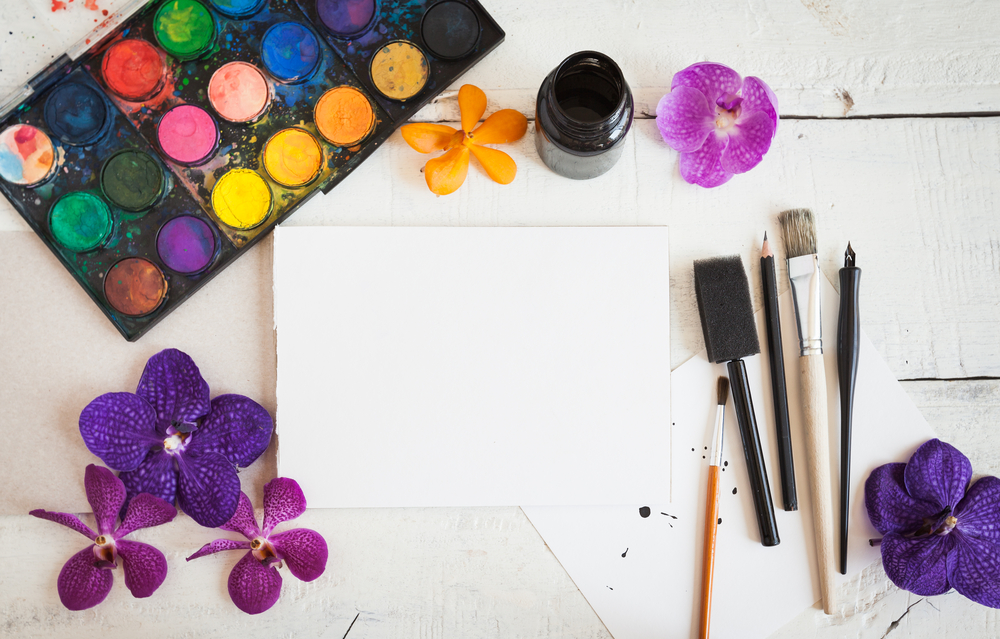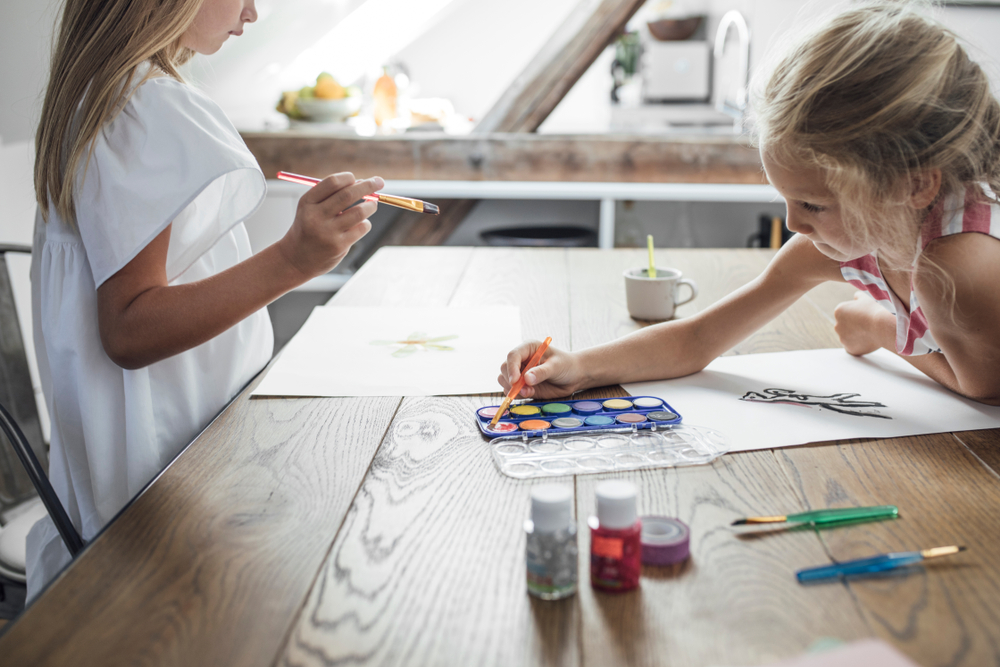Getting to Know the Techniques and Basics of Watercolour

Mixing watercolour ratios can be difficult. With other paints, the consistency is already prepared and ready for use. But with watercolour, different ratios is what makes it special - watery for light, thicker for rich. Thus, you have to have a good grip on watercolour and how to mix and use them properly.
Learning to love watercolour is similar to growing a human relationship. When you meet someone for the first time you have a simple conversation. This conversation might be enough to get you thinking that you like the person, but it’s not until you start hanging out regularly that you begin to realise just how much you like them. The more you discover, the more you love. Discover watercolour blending techniques, basic watercolour techniques and more!
With this in mind, the very first thing you should do when getting to know watercolour is…
Buy a watercolour journal

A journal is your regular conversation with watercolour. It’s what builds on your relationship and what will eventually lead to you falling head over heels in love. Your first few pages should be all about mindset: what drew you to watercolour in the first place and what watercolour artists and paintings you admire. Next in your journal should be a list of your favourite colours. Paint a swatch of each and explain how the colour makes you feel or what you love about it.
Order your 32 sheet hardbound watercolour journal and some watercolour paints and learn more about the fun you can have with watercolour journaling.
Once you have your journal and you’ve better established what you want from your watercolour journey, you can start to play around with techniques and the basics.
Watercolour techniques

Draw a series of rectangles in your journal, grab a range of brushes and paints and have a go at some of the many watercolour techniques. Let each rectangle dry before you move onto the next technique, a hairdryer can help with this.
Watercolour techniques you could try include:
Wet-on-wet
Wet-on-wet achieves a very fluid and unpredictable effect. It’s ideal for covering large areas of sky or sea or for areas where you need a soft underpainting (the first layer of paint).
Dry-on-dry
Dry-on-dry requires you to use a minimal amount of water on your paint-loaded brush and then let it dry even more before brushing onto your paper. It’s a good technique for creating rough looking texture and you can vary the pressure you put on your brush.
Salt
Salt is perfect for creating textured backgrounds. Sprinkle over paint while it’s still damp (not wet) and then once it’s dry, scrape the excess away with your fingernail.
Tissue
Saturate a rectangle with colour and then crinkling a sheet of tissue paper, apply it to the top of the wet paint. Press down and leave for a minute or two. Any longer and you risk the tissue paper sticking.
Alcohol
Take a cotton bud dipped in rubbing alcohol and drip the alcohol onto a wet rectangle of colour. This can be a great technique when playing around with moons.
Crayon
Take a white wax crayon and draw any design you like in a blank rectangle. Press firmly into the paper as you go. If you have difficulty seeing the design due to the crayon being white, tilt your paper to the side. Apply your watercolour wash and see that the design ‘resists’ the paint.
Ink
Take a fine-tip permanent pen and draw a design in your rectangle. Then paint as you would a coloring book, using a small round brush.
Water
Apply a watercolour wash and before it dries completely, load a brush with water and let the water drip onto the paint.
Splatter
Who doesn’t love a bit of messy painting? Take a colour, load your brush with it, tap the top of the brush and let the colour fall. Wash your brush, and repeat using different colours.
Layers
Watercolour has a beautiful translucent nature that you can’t get with other paints. To play with transparency, take a light colour and paint a shape. Once completely dry, choose a darker colour and overlap. Repeat with a darker colour as many times as you like.
Watercolour basics

In the pages of your journal:
Practice drawing
We know you’re keen to get stuck into watercolours but practicing drawing with a 5B or 6B pencil will help you train your hand for small, tight and finely detailed finishes. Place your journal on a vertical surface if you can and train your eye to accurately judge proportion.
Choose a focal point
A centre of interest with tonal contrast is crucial when working with watercolour - it holds a viewers attention before letting the mind wander off to the rest of the painting. Don’t confuse a centre of interest with the centre of your painting, however - your focal point should be always be off centre (unless you’re after a formal and static composition).
Include areas of relief
A watercolour that’s filled with fine detail can be difficult to look at. Watercolour requires areas of relief. Watercolour is loved for its translucency so find ways to include flat areas of relief, an expanse of water for example.
Let your subject decide
Your subject will dictate which colours you choose. Buildings and landscapes, for example, may call on you to use earthy colours such as Raw Sienna and Burnt Sienna with Ultramarine or Indigo. A limited palette (3-5 colours) should be your goal in the beginning because until you get the hang of watercolours merging too many will make your work look muddy.
Accept foreign colour
At times you will apply a colour that just doesn’t sit right in the painting. The remedy to this is to add more of it. Seems strange, we know, but allowing a foreign colour to spill out into your painting in other areas will help the colour fit in.
Tie up colour
A few fine calligraphic lines can tighten up a disjointed colour arrangement but too sharp and your painting will look harsh. To soften the look of ink lines, spray lightly with water quickly after your draw them - this will give your lines a lighter, more feathery look.
Avoid ‘over dipping’ when working with strong colour
Rinsing your brush in between colours will dilute the mix if you are playing with strong dark colours. Use very little water for strong darks and stay away from opaque yellow, which will make your darks seem muddy.
Think you’re ready to practice watercolour techniques and the basics? Start falling in love with watercolour and get your watercolour journal and everything else you need from Discount Art N Craft Warehouse. Browse through our watercolour ranges including Watercolour Paint Supplies, Watercolour Paint Brushes, Watercolour Paint Mediums & Varnishes, Watercolour Pencils, Watercolour Paper and more!
